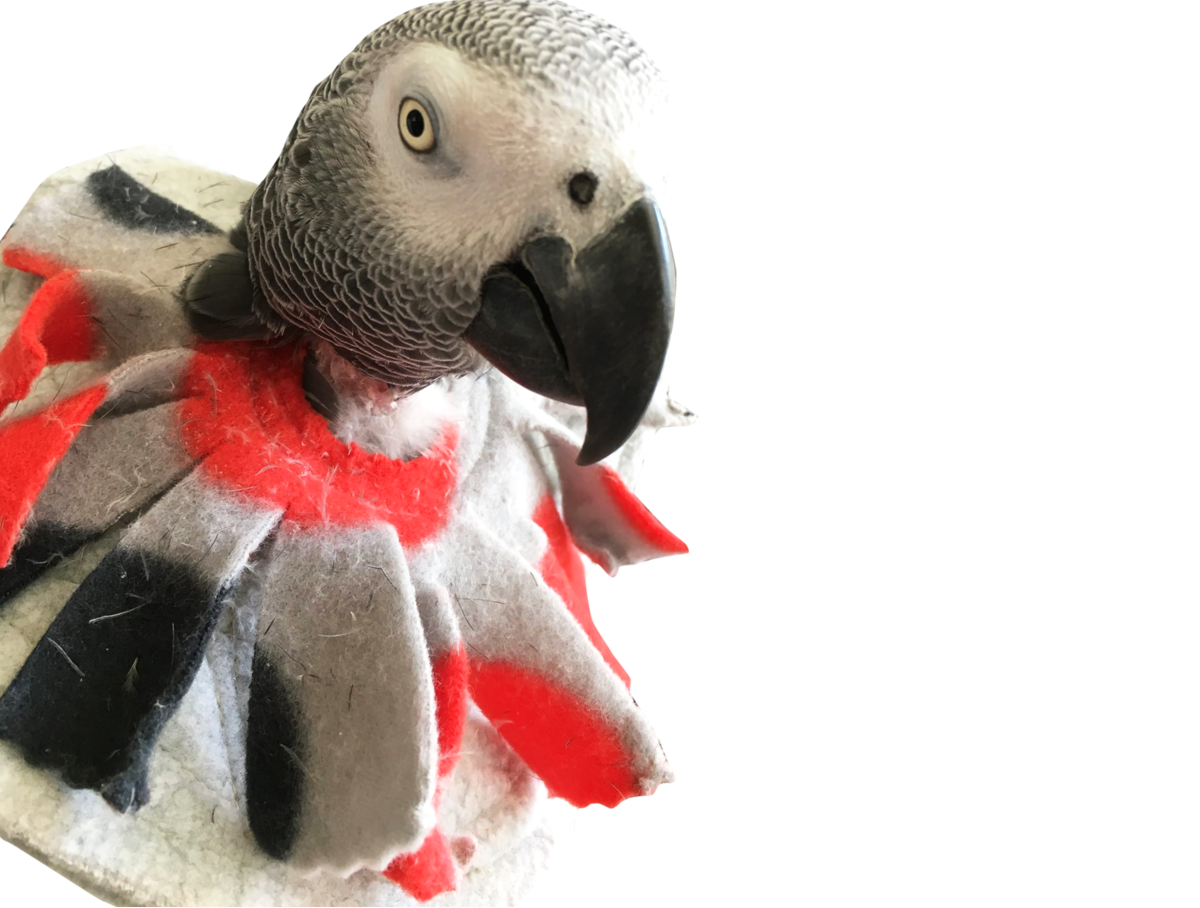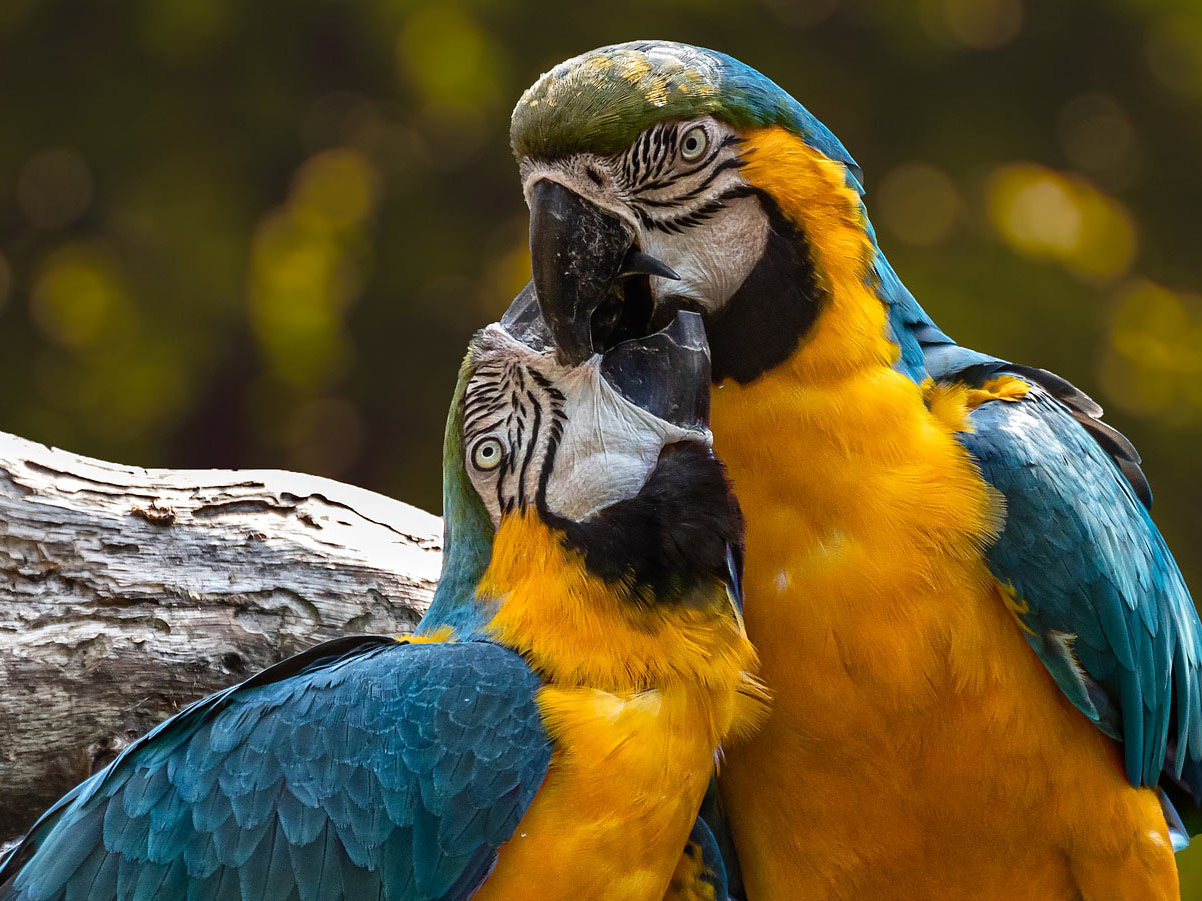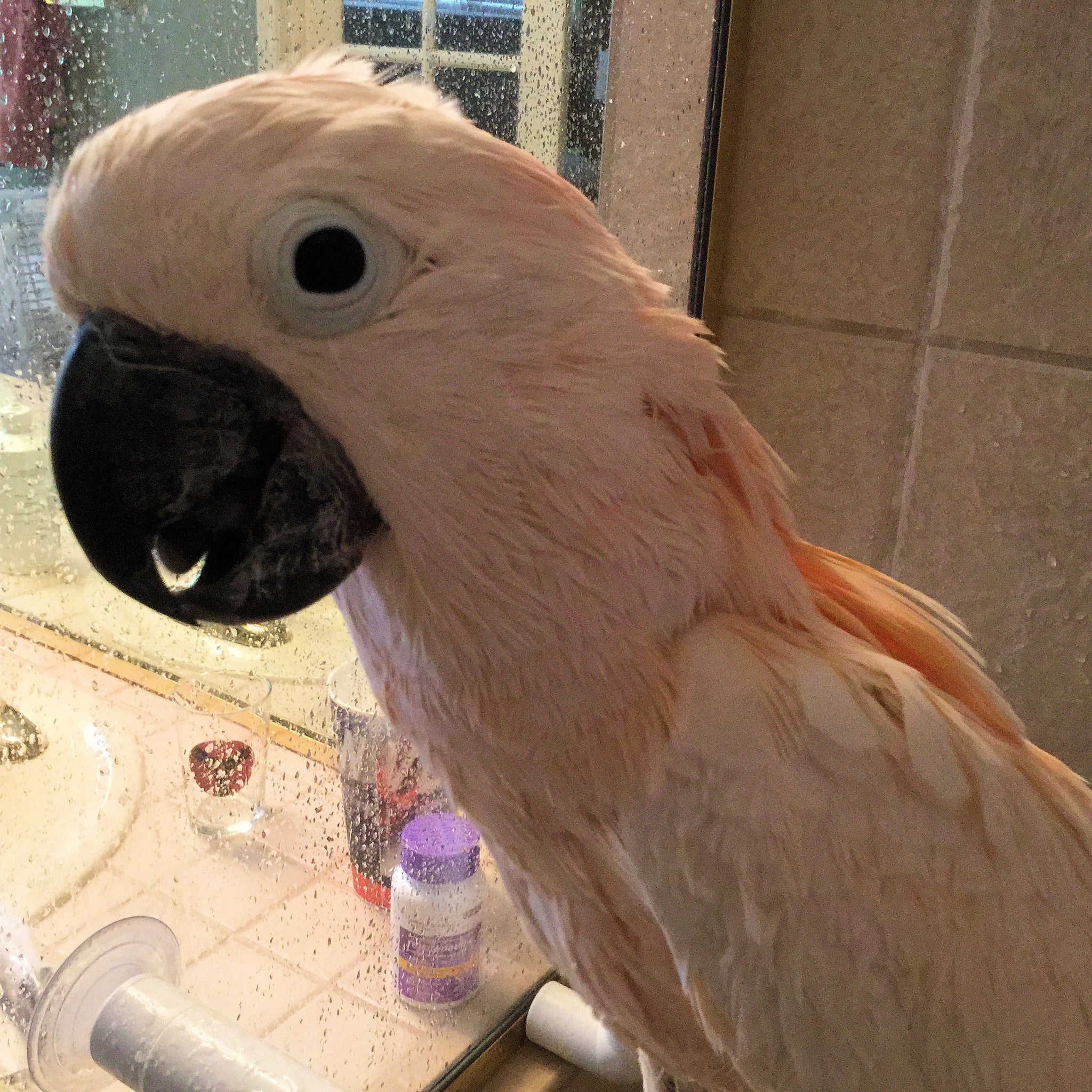Can You Put A Collar On A Bird?
Definitely! Bird's can wear collars. Bird collars are a great choice to interrupt feather plucking behavior. They are also really useful for birds recovering from surgery or a wound.
But, you can’t just slap a bird collar and expect it to go well Your bird has to be given time to become accustomed to the collar. It has 3 major obstacles to overcome.
First, the weight of a bird collar can be daunting. Even though UnRuffledRx designs lightweight styles, your bird has never had to carry weight around before. Do you know how anything new scares many birds? Well, the weigh of even a light collar is new and may make the bird scared.
Second, having material rub on their feathers can feel weird to most birds. A plucker, in particular, may have very sensitive skin. Your bird will need time to become accustomed to this feeling. Over time, many birds come to find comfort in the weigh, like a weighted blanket effect.
Third, birds pluck for a reason. Plucking has become a coping mechanism to manage anxiety. When you suddenly slap a collar on a bird, you essentially remove its anxiety reduction coping strategy leaving the bird to feel very vulnerable.
For these reasons, it is important to plan to take 1 - 2 weeks to train your bird to wear a collar. And, on top of that, you’ll want to begin reinforcing or rewarding behaviors that you want to see more of.
Training Your Parrot to Wear a Bird Collar or Vest
Training your pet bird to wear a bird collar will reduce emotional trauma and fear that you’re your bird may feel as you begin to tackle parrot feather plucking. Before you start training your parrot, figure out what motivates your bird. Click here to learn how to find a reward that your bird craves, whether it is a special toy or a delicious treat. Enthusiastic verbal praise and "scritches" in favorite places are also great rewards for birds. Schedule a short, daily time to train your bird to wear the harness. Clicker training makes any training easier and faster.

Helpful Bird Collar Training Tips:
- Use Clicker Training to teach your bird to tolerate you touching of its’ head & wings.
- Keep the training sessions short and fun to avoid mental fatigue. 5 - 10 minutes once or twice a day will do.
- Pick a consistent time to practice, preferably on a daily basis.
- If your bird becomes scared, back off and work on a skill that it has already mastered.
How to put a collar on a bird
- Allow your bird to see the garment from a safe distance for 1-3 days. Make sure to look at, talk to, and handle the collar, as if it were a stuffed animal while your bird is watching, Attentively reward all progress with favorite treats.
- Lay the collar on your shoulder as you go about usual care routines for 1 - 2 days. Next, handle your bird while the collar is on your shoulder for another 1-2 days, while again rewarding all brave behavior.
- Allow your bird to explore the collar. Place favorite treats on the collar fo the bird to retrieve and treat your bird as it allows the collar to touch its body. Don’t forget to reward progress every step of the way.
- During the above time, train your bird for handling its wings and torso. Always offer treats and head scratches for any progress toward tolerating you touching its body.
- Prepare the cage for testing out the collar. Lower perches and bowls. Line the cage bottom with a towel in case of a fall.
- When both you and your bird are ready, put the collar on for 1-3 hours when you can supervise your pet. It is critical to reward your pet every time you see it tolerating the collar while ignoring unfounded fits.
- Slowly increase the time the bird wears the collar in 30 - 60-minute increments. At this stage, you’re helping your bird to gain the physical strength to carry the collar on it’s back for periods of time.
- As your bird gains strength and tolerates the collar increase wearing time and start moving perches and bowls closer to their usual locations.
- Keep in mind that you may have to show your bird how to climb, perch, eat, and drink. Most birds figure it out on their own, but nervous birds need more support.

NOTE: ALWAYS SUPERVISE YOUR BIRD WHILE IN THE BIRD COLLAR
Next, you'll want to teach your bird to wear the collar without obsessing about ripping it off.
Using a timer or stop watch, praise your bird every time you observe it not chewing at the collar, increasing the time so that your bird learns that it is expected to wear the collar without chewing it up.
When your bird can tolerate wearing the collar for 5-minute segments, try moving your bird to different locations, maybe a play stand or on your shoulder.
When your bird can wear the collar in most locations in its normal home environment, for 30 minutes try to walk away for short periods of time.
Some birds quickly learn to remove the collar. If your bird has learned how to remove the collar, you can try using duct tape on the underside or installing some heavy-duty snaps preferably stainless steel or spray the collar with Bitter Apple.
Remember, depending on the collar that you purchased, our UnRuffledRx Fleece Collars are designed as a preening alternative as birds. Please choose bird collars based on your bird's chewing habits. Moderate and severe pluckers usually need a robust collar.






3 comments
Marianne
How can they preen with the collar on. How long should the collar stay on for plucking
How can they preen with the collar on. How long should the collar stay on for plucking
Jenny
How did it go? I have an African grey who’s having similar issues, a bit intimidated by the collar! But need to do something her feathers are getting much worse, it all started by a botched wing clipping so she could no longer fly around the house think she’s agitated not sure about drugs didn’t know you could give them to birds!
How did it go? I have an African grey who’s having similar issues, a bit intimidated by the collar! But need to do something her feathers are getting much worse, it all started by a botched wing clipping so she could no longer fly around the house think she’s agitated not sure about drugs didn’t know you could give them to birds!
John Wildeman
Hi,
I’m new to your website but thanking God that I found it. When I lived in Lake Worth, Fl a number of years ago Dr. Greg Harrison was my Vet. That was when he was making his pellets in the clinic and my birds have always eaten Harrisons. Anyway, my African Grey Congo has been picking her cover feathers for quite a while now. I’ve tried Haldol with very little results so I’m seriously thinking of trying a collar. She also chews her flight feathers so she looks pretty scragily ( if that’s even a word). So again, I’m looking forward to reading some of your literature and hopefully getting her to quit the feather plucking.
Thanks,
John Wildeman
Hi,
I’m new to your website but thanking God that I found it. When I lived in Lake Worth, Fl a number of years ago Dr. Greg Harrison was my Vet. That was when he was making his pellets in the clinic and my birds have always eaten Harrisons. Anyway, my African Grey Congo has been picking her cover feathers for quite a while now. I’ve tried Haldol with very little results so I’m seriously thinking of trying a collar. She also chews her flight feathers so she looks pretty scragily ( if that’s even a word). So again, I’m looking forward to reading some of your literature and hopefully getting her to quit the feather plucking.
Thanks,
John Wildeman